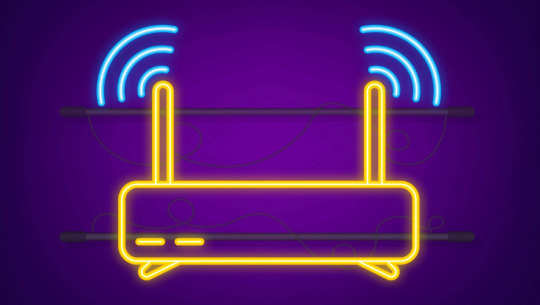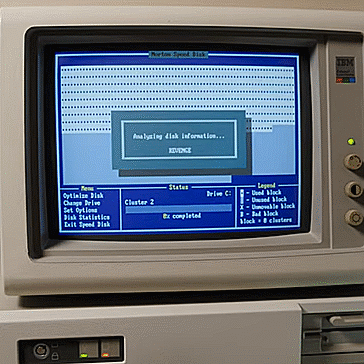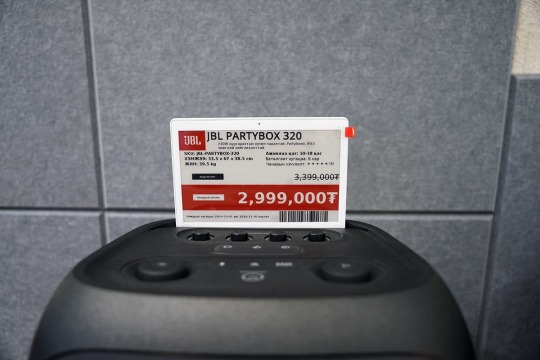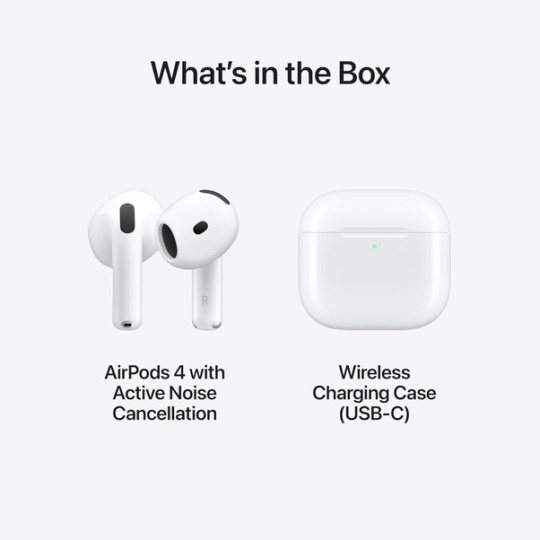#Evolution of Wireless Connectivity
Explore tagged Tumblr posts
Text
With the increasing need for high-performance electronic connectors in advanced electronic devices, the electronic connector market is experiencing significant growth. Additionally, the adoption of Industry 4.0 by manufacturing industries is also contributing to the expansion of the electronic connector market.
According to the BIS Research report, the global electronic connector market is projected to reach $123.90 billion by 2032 from $78.98 billion in 2022, growing at a CAGR of 4.66% during the forecast period 2023-2032.
#Electronic Connector Market#Electronic Connector Industry#Automotive#BISResearch#Electronic Connector#Evolution of Wireless Connectivity
0 notes
Text
youtube
#5G#6G#Technology evolution#Network infrastructure#Tech innovations#Pros and cons of 5G#Pros and cons of 6G#Future of connectivity#Wireless technology#Mobile networks#5G vs 6G#Internet of Things (IoT)#Smart cities#Youtube
0 notes
Text
"Bluetooth: Conectando Dispositivos y Culturas a Través de la Innovación Inalámbrica"

View On WordPress
#1. Bluetooth Technology#10. Bluetooth Versions#11. Device Interoperability#12. High-Speed Data Transfer#13. Bluetooth Low Energy (BLE)#14. Internet of Things (IoT)#15. Historical Influence in Technology.#2. Wireless Communication#3. Harald Blåtand#4. Ericsson Innovation#5. Short-range Connectivity#6. SIG: Bluetooth Special Interest Group#7. Bluetooth Evolution#8. WPAN and Piconet#9. Frequency Hopping
0 notes
Text
A three-decade journey to transform WiFi into a tangible connectivity solution.
The ubiquitous connectivity of Wi-Fi has played a pivotal role in shaping today’s consumer tech landscape. Acting as the wireless bridge for our mobile devices and smart appliances, it facilitates streaming, global internet access, and much more. Greg Ennis, the co-author of the proposal that laid the groundwork for Wi-Fi technology, recounts the intriguing journey behind this ubiquitous…

View On WordPress
#connectivity evolution#Greg Ennis#technology history#Wi-Fi#Wi-Fi Alliance#wireless LAN#wireless networking#wireless technology
0 notes
Text
Naruto Modern AU/Hollywood pt.5 - Evolution of Tecnologies & The Strongest Podcast
Since the industrialization of most large cities, new technologies, wireless devices, diversity of media, and better Internet connection have opened the flow gate for diverse opportunities and career paths online.
Streaming took over since techno scientists rushed the installation and promotion of such interfaces, after getting a glimpse of the promised profit along with funding from the rich families (Hyuuga and Senju) to do so. Video streaming and online media grew overnight across large and small nations as it is a new ineffective way of communication. Ideas can be shared and reach an unlimited audience to support your work. This new way of doing work proved itself to be helpful, as it reduced unnecessary paperwork for the Hokage.
In these times, an individual named Mizuki grew in popularity for strange reasons. A nobody like him released a series of videos, raging and insulting an elementary school teacher, Iruka Umino who was trying to teach his audience phonetics and how to improve reading skills. Out of nowhere, he called this man everything but a child of God. Red in the face, relentlessly huffing and puffing.

His rants gained a lot of attention because of their absurdity. This deranged weirdo made bold and outrageous claims about the teacher. His audience was perplexed (and low-key entertained) since Iruka was the least problematic person on the Internet. Efforts to shut down Mizuki made him angrier as he noticed people either clowned him or defended Iruka.

It went for the worst when Mizuki started doxing him and his students leading to the teacher unfairly losing his job. The turn of events took everyone by surprise, but in all humbleness, Iruka made an apology video taking the blame for the situation and the inconvenience it caused his students and their families. He likely touched on his past and how him and Mizuki were friends (they were dating, but he did not say that) before leaving social media to Mizuki’s enjoyment.
Months passed, and net-citizens searched to the end of the Earth for their favorite sweet Professor but couldn’t find him. They could not predict that the next time they would see him would be on TV…
Well, in the height of the crazy debacle with Mizuki, the lawyer turned A list actor Kakashi Hatake watched the whole scandal go down. He was practicing and training for his next movie: Speed Hour. An action comedy with fellow fitness influencer, celebrity trainer, and part-time actor: Might Guy.

The movie involved speaking a foreign language, which was not Kakashi’s best asset. His manager has been harassing him to improve his pronunciation because of that damn mask he wears 24/7. Let’s knock out two birds with one stone, so he reached out to Iruka after he heard the teacher lost his job to then hire him as a speech specialist and help him prepare for his role.
Iruka was hesitant at first but accepted. Due to the movie's success, he became a celebrity speech specialist. Kakashi was a long-time watcher of Iruka’s former video channel. He found his videos, relaxing (and thinks the nice teacher is super cute). Iruka can now be seen on the red carpets of special events and is dating Kakashi. What an upgrade!

When Mizuki found out his attempts at sabotaging the former teacher failed, he had a mental breakdown during one of his live streams.

He vanished from the Internet to let the dust settle but came back with “The Strongest Podcast” where he discusses subjects important to men. Don’t hope too much because it is just questionable conspiracy theories, red pill narratives, and “exposing celebrities” content with his unhinge antics. He has not changed at all.

Matter of fact, he had made a tradition with his cohosts to call everyone and their mama gay. He has been on Iruka since his newfound popularity. Mizuki spilled every single intimate detail of their past relationship not realizing he was exposing his orientation and abusive antics (I made him blow me when I was driving & the cheeks are clapping). Don’t call him out, Mizuki would foam at the mouth if you call him gay. (I’m a strong, alpha male! I don’t do that gay shit!). One day, Anko (invited as a guest) called him out for just being a bitter, scorned ex missing his narcissistic supply and how he would still hit it if he could (She was right) but got dragged out of this studio by force.

Mizuki has a larger following than most people would like to admit. He has a really supportive fan base who 1000% agree with him and go to the front lines to defend him. A lot of people (supporters and hate watchers) tune in for his conspiracy theories, and when he exposes celebrities along with another random dude named Kabuto. They claim to have exclusive sources and hidden information in the deepest pit of the dark web. 95% of anyone coming across their content laugh it off as insanely far-fetched and move on with their lives. Many theories, claim to be real have their audience in a chokehold:

• The Uchihas are devil worshippers
• They leaked Sasuke’s real surname and aristocratic affiliations, rushing the disbandment of Taka
• Demeaning and toxic ideologies against other nations disguised as scientific facts
• Red pill content
We give them less credit than they deserve because they are still two deranged grey men who make such unhinged statements that it overshadow any “ truth” they put out there like:
• Calling anyone and everyone gay (with “proof”)
• The Earth is shaped like a cube
• News Anchor, Minato Namikaze, is in fact, a woman.
• All men from Kiri have 10+ inches dicks
• Claiming to be the perfect example of masculinity and handsome looks
The recent trick up their sleeves is swearing on God, the famous actor Itachi Uchiha is homosexual. They came up with the most outlandish, mind-boggling proofs to support their bogus claims
Most of their accusations were ignored by the general public and still are till this day. The minute they threatened to release hotel security footage, revealing the identity of the basketball player the actor was allegedly entangled with, Itachi’s PR team came through the back door (literally) and shushed the duo for good. They vanished overnight, without a trace. The supporters of the channel are still trying to give Justice to Mizuki by keeping remnants of his account alive as much as possible (This is an attack on freedom of speech!) but are struggling since the claims made barely scratched the actor's public image.
The most ironic thing about all of this is that Itachi’s sex tapes could be leaked tomorrow and not affect his career or the public opinion of him AT ALL. Weirdly, he could walk out of this level of controversy untouched and brand deals intact. People would just blink twice and keep it pushing like nothing happened.
NEXT PART
PRECIOUS PART
BACK TO FIRST PART
#naruto headcanons#naruto imagines#naruto#naruto modern au#naruto shippuden#naruto au#naruto fanart#naruto art#itachi uchiha#uchiha itachi#mizuki#naruto mizuki#iruka umino#kakashi x iruka#kakashi hatake#kakairu#iruka sensei#umino iruka#kakashi sensei#might guy#guy sensei#anko mitarashi#kabuto yakushi#im stareting to have fun with the art#PLEASES DONT IGNONRE THISSSSSSSS
38 notes
·
View notes
Text
Emerging technologies
I recently read an article from The Journal of Research on Libraries and Young Adults that touched on developing the library and its programs alongside the evolution of teens’ needs with emerging technologies. It was enlightening as to just how much their needs have changed - both in terms of skills, tools and devices needed in order to learn, as well as the actual learning material - and counterintuitively just how little it seems that teens are consulted when developing programs that are designed for them. Additionally, the author, Mega Subramaniam, suggested as a result of their research that youth librarians need to rethink the programs they design in a holistic sense - especially shifting the focus away from books, since they are one of a multitude of media that young adults have access to and are interested in. Subramaniam further suggested that librarians shift their focus away from the building and the collection, and instead focus on how the library can be used as a community hub, and it is this relationship building exercise - I understand - that will facilitate genuine feedback from young adults as we collaborate with them to design programming that will be utilised and effective for them.
Reading this article was insightful for me, as I intend to be a librarian primarily focusing on facilitating the development of children and young adults. It had never occurred to me before that at any point in time, librarians were not consulting with the demographic for which they were designing programs.
I also was not quite aware of just how different access to information and media is compared to when I was that age. Even though this article is from 2016, its point about evolving technology and the need for librarians to keep up with the changes is increasingly relevant today, since the COVID-19 pandemic thrust the world into a new digital age. (De’, Pandey & Pal, 2020).
In reading this article, I realised that it’s not enough to want to help young adults develop, I need to be able to keep up with their technology use, usage trends, and understand how modern teenagers learn. More specifically, I should encourage a relationship between myself as a librarian - as a facilitator of information - and the teenagers that visit my library, so that I can gain genuine feedback from them in terms of these criteria. When I was that age, libraries were just book houses, and the internet was a fledgling, only just becoming wireless and easily accessible in people’s homes, but the modern teenager has a wealth of information and media in the palms of their hands, readily accessible - I truly had never considered just how much as changed, and it was ignorant of me to be unaware that today’s youth would have differing trends in technology use. This article has opened my eyes to just how much technology has actually changed, and how much I as a librarian will need to keep up as both technology and teenagers; needs evolve.

References
De', R., Pandey, N., & Pal, A. (2020). Impact of digital surge during Covid-19 pandemic: A viewpoint on research and practice. International journal of information management, 55, 102171. https://doi.org/10.1016/j.ijinfomgt.2020.102171
Subramaniam, M. (2016). Designing the library of the future for and with teens: Librarians as the “Connector” in connected learning. Journal of Research on Libraries and Young Adults, 7(2). http://www.yalsa.ala.org/jrlya/wp-content/uploads/2011/02/Subramaniam_Designing-the-Library_Final.pdf
2 notes
·
View notes
Text
The **evolution of the iPhone** since its introduction in 2007 has been a defining journey in the world of smartphones, with significant advancements in design, performance, and features. Here's a brief overview of key milestones in iPhone evolution:
### 1. **iPhone (2007)**
- **Notable Features**: 3.5" touchscreen, 2 MP camera, 4GB/8GB storage.
- **Innovation**: The first touchscreen-only smartphone, removing the physical keyboard seen in other phones at the time. It introduced multi-touch technology and mobile internet.
### 2. **iPhone 3G (2008)**
- **Notable Features**: 3G network support, App Store.
- **Innovation**: Faster internet browsing with 3G connectivity and the launch of the App Store, which opened the door to third-party apps.
### 3. **iPhone 3GS (2009)**
- **Notable Features**: Faster processor, video recording, voice control.
- **Innovation**: Significant speed improvements ("S" stands for speed) and better camera capabilities, including video recording.
### 4. **iPhone 4 (2010)**
- **Notable Features**: Retina Display, FaceTime, 5 MP camera, glass design.
- **Innovation**: A major redesign with a stainless steel frame and glass front/back, and the introduction of the Retina Display, which had higher pixel density for crisper visuals.
### 5. **iPhone 4S (2011)**
- **Notable Features**: Siri, 8 MP camera, A5 chip.
- **Innovation**: Siri, the first virtual assistant on an iPhone, was introduced, along with significant camera and processor upgrades.
### 6. **iPhone 5 (2012)**
- **Notable Features**: 4" display, Lightning connector, LTE support.
- **Innovation**: The iPhone grew in size to a 4-inch screen and introduced the Lightning connector, replacing the 30-pin dock.
### 7. **iPhone 5S & 5C (2013)**
- **Notable Features (5S)**: Touch ID, 64-bit architecture.
- **Notable Features (5C)**: Colorful plastic body.
- **Innovation**: The iPhone 5S brought Touch ID for fingerprint authentication and a powerful 64-bit A7 chip. The 5C was a more affordable model with colorful designs.
### 8. **iPhone 6 & 6 Plus (2014)**
- **Notable Features**: 4.7" & 5.5" displays, Apple Pay.
- **Innovation**: Apple entered the "phablet" market with larger displays, along with introducing Apple Pay, the company's mobile payment system.
### 9. **iPhone 6S & 6S Plus (2015)**
- **Notable Features**: 3D Touch, 12 MP camera, 4K video.
- **Innovation**: The introduction of 3D Touch, which allowed the screen to detect varying levels of pressure, creating new ways to interact with the phone.
### 10. **iPhone SE (2016)**
- **Notable Features**: 4" screen, A9 chip (same as iPhone 6S).
- **Innovation**: A smaller, more affordable model, resembling the iPhone 5S but with the internal power of the iPhone 6S.
### 11. **iPhone 7 & 7 Plus (2016)**
- **Notable Features**: Dual cameras (7 Plus), no headphone jack, water resistance.
- **Innovation**: The removal of the headphone jack was controversial, and Apple also introduced dual cameras on the 7 Plus for improved zoom and portrait photography.
### 12. **iPhone 8 & 8 Plus (2017)**
- **Notable Features**: Wireless charging, glass back, True Tone display.
- **Innovation**: While similar to the iPhone 7, the 8 series introduced wireless charging through the glass back and enhanced display technology with True Tone.
### 13. **iPhone X (2017)**
- **Notable Features**: Edge-to-edge OLED display, Face ID, no home button.
- **Innovation**: A radical redesign that removed the home button and Touch ID, replacing it with Face ID, Apple’s facial recognition technology. It also introduced the first OLED display in an iPhone.
### 14. **iPhone XS, XS Max, & XR (2018)**
- **Notable Features**: Larger OLED display (XS Max), Liquid Retina display (XR), A12 chip.
- **Innovation**: The XS Max brought a massive 6.5" screen, while the XR offered a more affordable option with an LCD display but the same powerful internals.
### 15. **iPhone 11, 11 Pro, & 11 Pro Max (2019)**
- **Notable Features**: Ultra-wide camera, night mode, A13 chip.
- **Innovation**: A triple-camera system on the Pro models enhanced photography, including better low-light performance with night mode.
### 16. **iPhone SE (2nd Gen) (2020)**
- **Notable Features**: A13 chip, 4.7" display, Touch ID.
- **Innovation**: Like the original SE, this model combined older iPhone design (resembling the iPhone 8) with powerful internals from newer models, offering a budget-friendly option.
### 17. **iPhone 12 Mini, 12, 12 Pro, & 12 Pro Max (2020)**
- **Notable Features**: 5G support, MagSafe, Ceramic Shield.
- **Innovation**: The iPhone 12 series introduced 5G connectivity and the MagSafe system for attaching accessories. Ceramic Shield provided increased drop protection.
### 18. **iPhone 13 Mini, 13, 13 Pro, & 13 Pro Max (2021)**
- **Notable Features**: Smaller notch, ProMotion 120Hz display (Pro models), Cinematic Mode.
- **Innovation**: Focused on camera improvements, including Cinematic Mode for video recording, and higher refresh rate displays on the Pro models for smoother performance.
### 19. **iPhone SE (3rd Gen) (2022)**
- **Notable Features**: A15 chip, 5G, improved battery life.
- **Innovation**: Continuation of the budget-friendly SE line with more powerful internals.
### 20. **iPhone 14, 14 Plus, 14 Pro, & 14 Pro Max (2022)**
- **Notable Features**: Dynamic Island (Pro models), 48 MP camera (Pro), Always-On Display (Pro), satellite SOS.
- **Innovation**: The Pro models introduced the Dynamic Island, a new interactive notification area, along with the powerful 48 MP main camera and satellite communication for emergencies.
### 21. **iPhone 15, 15 Plus, 15 Pro, & 15 Pro Max (2023)**
- **Notable Features**: USB-C port, A17 Pro chip, Action Button (Pro models).
- **Innovation**: The transition from Lightning to USB-C for universal charging, along with enhanced performance and camera upgrades.
The iPhone's journey reflects major technological strides and design shifts, focusing on improving usability, camera quality, and processing power with each iteration.
5 notes
·
View notes
Text
Friday 8th November 2024
The night passed very peacefully, and our truckie place was really quite enjoyable in a truckie sort of way. We met some interesting people who are doing a very similar sort of route to us, and we swapped advice, which I'm sure has been forgotten already. With little choice, I suppose if you find yourself in this neck of the woods, then I could recommend it.
There are, however, two main places to stay in Daly Waters, and combined, they comprise Daly Waters. Sadly, through an administrative problem, we thought we had booked at the other place, which was altogether quirky whilst ours was altogether truckie. We thought we were staying at the Daly Waters Pub, Outback Servo. This place is run by a bloke who has what I might diagnose as compulsory junk collector syndrome. Which is good because I can persuade Martine that however bad she thinks I am in the collecting department, this chap is a severe case. He passed eclectic years ago. He has bits of De Havilland aircraft, bits of helicopter, rusty vintage cars, vans, and buses. In the bar area over years, he has persuaded women to leave their bras in quantity; and they are hanging up as proof! Well, I shall post photos as evidence and to form one's own opinion. We had a coffee there before we embarked on the next stage of our journey, which was to Tennant Creek 407kms away.
Now, to compare our journey at this point in any way to the Camino de Santiago could possibly be judged as sacrilegious. However, hear me out. Our journey, not a pilgrimage, along the Stuart Highway, is in this case very much following literally in the footsteps of one man, John McDouall Stuart. His courageous endeavour, putting his and others' safety to one side, with a single focus set out six times in all to find a route from Chambers Creek in the south to Darwin in the north in order to lay the first telegraph lines connecting Australia to London. Surely that accounts to a Camino? Today, we have discovered monuments to the successes and failures of these expeditions.
The first monument was in Daly Waters itself and was the Stuart Tree, which has carved into it a big letter S. The top half of the tree sadly is missing, however legend certainly agrees that Stuart himself found the time in a very busy and exacting schedule to emboss his initial thus, most likely with his Swiss Army Officer's knife. Perhaps there are doubts, but he was supposed to have stayed locally on his sixth expedition. We also viewed a monument just north of Tennant Creek at Attack Creek, where he was attacked by aboriginies and there were injuries apparently in the skirmish which caused the party to return for a bandage or two and more supplies. On a more positive note, the third monument was in honour of Sir Charles Todd, who, at 15.15 on August 22nd, 1872, officially witnessed the joining of the two sections from the north and south. Unfortunately, we are denied more detail, but we can perhaps imagine the course of events when Sir Charles tried to send a message, nothing happens and some wag says, have you tried turning it off and back on again? We can only imagine the sequence, but at 15.15 in Australia, it would have been 4.45am in London. I doubt anyone of any importance would have been interested in a chat with someone in the antipodeans. Who? says Queen Victoria. Sir Charles Todd, says Gladstone. Who, says QV again? Do I know him?
Of course, when Stuart had completed his route, which I trust he had recorded and marked meticulously, he then called for Cable and Wireless to do the grunting and actually lay the cable. The route could not be criticised, it ran as straight as a ruler. The greatest inventions of all times must include the wheel, sliced bread, Teflon frying pans and sticks. Stuart must have used 3 sticks to get a straight line north. Whilst the aboriginies were throwing sticks at him, he was employing them like a Roman to make a straight line. That's evolution for you I suppose. The aboriginies caused a lot of interruptions to the progress of the line. Even when it was complete, they made it their business to damage it. They broke the glass insulators on the poles and used the fragments of glass on the tips of their spears. The solution appears to be that they were given uniforms and jobs in the repeater stations, which also fixed the naked issues the missionaries were concerned about.
We are now ensconced in the Outback Caravan Site in Tennant Creek and are extremely comfortable sitting here once again watching the sun go down and consuming SB with some nibbles.
ps. Travelling along the Stuart we passed through huge areas that were in a controlled burn session. Quite unnerving having flames next to the highway.










5 notes
·
View notes
Text
Soundbar Setup Tips: Maximize Your Home Audio Performance
Soundbars have revolutionized the manner people enjoy audio in their houses, supplying a handy and incredible answer for reinforcing the sound of televisions and other gadgets. Compact, elegant, and relatively smooth to installation, soundbars have become an vital a part of modern-day home leisure systems. This article delves into the various elements of soundbars, consisting of their features, advantages, kinds, and suggestions for deciding on the right one in your desires.
High-quality soundbar with subwoofer
The Evolution of Soundbars
Televisions have gone through a good sized transformation over the last few decades, turning into slimmer and more visually attractive. However, this layout evolution has frequently come at the cost of audio best, as thinner TVs lack the distance for robust built-in audio system. Enter the soundbar – a sleek, standalone audio tool designed to cope with this obstacle by using turning in advanced sound high-quality.
The first soundbars emerged inside the overdue Nineties and early 2000s, typically as a response to the developing reputation of flat-screen TVs. These early models presented a easy way to beautify TV audio with out requiring a complex surround sound machine. Over time, soundbars have developed to encompass superior functions like wireless connectivity, integrated voice assistants, and Dolby Atmos assist, making them a versatile audio answer for diverse desires.
Key Features of Soundbars
Modern soundbars come packed with functions that cater to one of a kind choices and budgets. Some of the maximum remarkable capabilities include:
Sound Quality: Soundbars are designed to supply rich, immersive audio with enhanced readability and intensity. Many fashions consist of multiple drivers and subwoofers to create a balanced sound profile.
Compact Design: Unlike conventional domestic theater systems, soundbars are compact and may be without difficulty set up on a wall or positioned on a TV stand without occupying a lot space.
Connectivity Options: Soundbars usually offer numerous connectivity alternatives, such as HDMI ARC, optical enter, Bluetooth, and Wi-Fi, allowing seamless integration with TVs, smartphones, and other devices.
Virtual Surround Sound: Some soundbars use advanced audio processing technology to simulate surround sound, supplying an immersive enjoy without the need for multiple audio system.
Smart Features: Many soundbars come equipped with smart capabilities like voice control, app-primarily based controls, and compatibility with clever domestic ecosystems.
Customization: High-end soundbars frequently consist of EQ settings and presets that allow customers to tailor the sound to their alternatives or particular content material.
Types of Soundbars
Soundbars are available in numerous configurations to match unique desires and setups. Here are the principle sorts:
All-in-One Soundbars: These fashions encompass integrated subwoofers and drivers, making them a compact, standalone answer for higher audio.
Soundbars with External Subwoofers: These soundbars include a separate subwoofer unit, handing over enhanced bass overall performance. The subwoofers are frequently wireless, allowing bendy placement in the room.
Soundbar Systems with Surround Speakers: For a true surround sound enjoy, some soundbars encompass extra satellite audio system. These systems are ideal for home theater lovers.
Dolby Atmos Soundbars: Designed for a premium audio revel in, these soundbars guide Dolby Atmos technology, which creates a 3-dimensional soundstage with the aid of adding top to the audio.
Compact Soundbars: These are smaller soundbars designed for compact areas or secondary TVs. While they may lack superior features, they nevertheless provide giant audio improvements over integrated TV audio system.
Benefits of Soundbars
The recognition of soundbars stems from the numerous blessings they provide:
Enhanced Audio Quality: Soundbars significantly improve the audio experience as compared to traditional TV audio system, making talk clearer and sound outcomes more impactful.
Space-Saving Design: Their slender and streamlined layout makes soundbars a realistic desire for modern-day dwelling spaces, where area is probably constrained.
Ease of Installation: Setting up a soundbar is typically trustworthy, frequently requiring only a single cable connection or wi-fi pairing.
Affordability: While high-cease models may be expensive, there are many price range-pleasant options that offer awesome performance.
Versatility: Soundbars can be used for extra than simply TV audio; they are remarkable for streaming track, gaming, and even arms-free calls, depending at the model.
Factors to Consider When Choosing a Soundbar
Selecting the right soundbar involves thinking about several elements to make certain it meets your desires and preferences:
Audio Quality: Pay attention to the soundbar's specs, which include the wide variety of channels, wattage, and frequency range. Listening to a demo, if feasible, also can assist.
Room Size and Layout: Choose a soundbar that fits the dimensions of your room. For larger rooms, don't forget fashions with outside subwoofers or additional speakers.
Compatibility: Ensure the soundbar is like minded along with your TV and different gadgets. Look for features like HDMI ARC or eARC for seamless integration.
Connectivity Options: Consider your selected connection technique, whether it's Bluetooth, Wi-Fi, or bodily cables.
Features and Functionality: Determine which functions are most critical to you, consisting of digital surround sound, voice assistants, or Dolby Atmos aid.
Budget: Set a budget and examine models inside your rate range. While top rate soundbars provide superior functions, there are tremendous mid-variety and budget alternatives available.
Setting Up Your Soundbar
Setting up a soundbar is usually quick and easy. Here are a few popular steps to follow:
Position the Soundbar: Place the soundbar without delay underneath or above your TV for most beneficial audio alignment. If mounting it on a wall, make sure it is at ear level.
Connect to Your TV: Use the preferred connection technique, inclusive of HDMI ARC, optical cable, or Bluetooth. Follow the manufacturer’s instructions for setup.
Adjust Settings: Access the soundbar’s settings to customise the audio profile. Experiment with presets or EQ adjustments to find the satisfactory sound in your space.
Test the Audio: Play distinctive styles of content to ensure the soundbar can provide steady overall performance across films, track, and TV indicates.

Maintenance and Troubleshooting
To preserve your soundbar acting optimally, observe these renovation guidelines:
Keep it Clean: Dust the soundbar regularly to prevent dust buildup, that may affect sound first-rate.
Update Firmware: Check for firmware updates from the producer to make sure your soundbar has the today's capabilities and fixes.
Check Connections: Periodically investigate cables and connections to make certain they're stable and functioning properly.
Troubleshoot Issues: If you enjoy problems like audio lag or connectivity troubles, seek advice from the person guide or searching for support from the manufacturer.
2 notes
·
View notes
Text
Revolutionizing Displays with E Ink Paper: A Comprehensive Overview
E Ink technology has revolutionized the way we interact with digital displays, offering a paper-like reading experience that is both energy-efficient and versatile. environments.

Understanding E Ink Technology
E Ink, or electronic ink, is a technology that emulates the appearance of ink on paper. Unlike traditional backlit displays, E Ink screens reflect ambient light, providing high contrast and readability even under direct sunlight.
This bi-stable technology retains images without continuous power, consuming energy only when the display is updated.

Working Principle of E-Paper
E-paper displays operate using electrophoretic technology, where microcapsules containing charged particles are manipulated by an electric field to form images or text. These displays are bistable, meaning they retain the image without power until updated, contributing to their low energy consumption.
Workflow of E-Paper Displays
Image Generation: Content is created or updated through a connected device, such as a computer or mobile device.
Data Transmission: The generated content is transmitted to the e-paper display via wireless communication protocols like Wi-Fi or Bluetooth.
Image Rendering: The e-paper display processes the received data and adjusts the electric fields within the microcapsules to form the desired image or text.
Display Maintenance: Once the image is set, the display maintains it without power, ensuring content remains visible until the next update.
This workflow enables e-paper displays to provide dynamic content with minimal energy usage, making them ideal for applications requiring frequent updates and low power consumption.
This innovation has found applications across various sectors, notably in retail.
E Ink in Retail: Transforming Customer Engagement
In the retail sector, E Ink displays are enhancing customer experiences and operational efficiency. Electronic Shelf Labels (ESLs) are a prime example, replacing traditional paper tags with dynamic, remotely updatable displays. This shift allows retailers to:

Update Pricing Instantly: Adjust prices across multiple locations simultaneously, ensuring consistency and accuracy.
Highlight Promotions: Use color variations to draw attention to special offers or new products.
Enhance Sustainability: Reduce paper waste and the need for manual label changes, contributing to environmental goals.
Advantages of E Ink Displays
The adoption of E Ink displays in retail offers several benefits:
Energy Efficiency: E Ink screens consume minimal power, with some devices operating for months on a single charge.
Readability: The reflective nature of E Ink provides clear visibility in various lighting conditions, including bright sunlight.
Flexibility: E Ink displays can be integrated into various retail applications, from price tags to large-scale signage.
More Industry Applications
Publishing: E-readers, such as Amazon's Kindle, utilize e-paper technology to provide a reading experience akin to traditional paper, reducing eye strain and improving readability. The recent introduction of color e-readers, like the Kindle Colorsoft, showcases the advancement of e-paper in the publishing industry.
Transportation: Public transportation systems employ e-paper displays for timetables and signage, offering clear visibility under various lighting conditions and low power consumption. This application ensures that passengers receive real-time updates efficiently.

Healthcare: Hospitals and clinics use e-paper for patient information boards and signage, allowing for easy updates and clear visibility, which is crucial in medical settings. The adaptability of e-paper displays contributes to better patient care and communication.

Future Trends
The future of e-paper technology is promising, with several trends shaping its evolution:
Color Displays: Advancements in color e-paper technology are expanding its applications beyond monochrome displays. Devices like the Kindle Colorsoft and the ReMarkable Paper Pro exemplify this trend, offering vibrant color displays while maintaining the benefits of e-paper.
Flexibility and Durability: Ongoing research aims to enhance the flexibility and durability of e-paper displays, enabling their use in a broader range of applications, including wearable devices and foldable screens. This development opens new possibilities for consumer electronics and advertising.
Integration with IoT: E-paper displays are increasingly being integrated into the Internet of Things (IoT), allowing for synchronized updates across multiple devices. This integration is particularly beneficial in smart retail environments, where real-time product information can be displayed and updated remotely.
Sustainability: E-paper's low power consumption and potential for recyclable materials position it as a sustainable alternative to traditional displays. As environmental concerns grow, e-paper technology is poised to play a significant role in reducing electronic waste and energy consumption.

Learn about its working principles, real-world applications, and exciting future trends in this in-depth article. 👇
The Quiet Revolution of E ink Paper: Where Innovation Meets Sustainability
1 note
·
View note
Text
Apple AirPods 4 is here!

Introducing AirPods 4.The next evolution of sound and comfort.

AirPods 4 with Active Noise Cancellation also available — a first for this design.

Clearer calls with Voice Isolation and a new, hands-free way to interact with Siri

Power up with USB‑C, an Apple Watch charger, or a Qi‑certified charger.
Immersive, theater-like sound. Personalized Spatial Audio with dynamic head tracking places sound all around you, creating a three-dimensional listening experience for music, TV shows, movies, games, and more.
Superclear call quality. Using advanced computational audio, Voice Isolation minimizes background noise while clarifying the sound of your voice. So you’ll be easier to understand when you’re speaking in loud or windy conditions.
AirPods 4 now offer the option for Active Noise Cancellation in this open-ear design for the very first time. Powered by the H2 chip and upgraded microphones, it helps reduce low-frequency environmental noise — like airplane engines, HVAC systems, and city traffic — before it reaches your ears.
AirPods 4 and the charging case are rated IP54 dust, sweat, and water resistant, so they’ll withstand anything from rain to heavy workouts.
The streamlined charging case is more than 10 percent smaller by volume than the previous generation, with no sacrifice to charging times. And AirPods 4 with Active Noise Cancellation feature a wireless charging case — the smallest in the industry with this capability — as well as a built-in speaker for Find My to help you keep track of it.
AirPods 4 pair immediately with every device connected to your Apple ID. Just place AirPods near your iPhone or iPad and tap Connect.

Available from September 20, 2024
Pre-order link here
2 notes
·
View notes
Text
Evolution Of Computer Keyboards
Computer keyboard A keyboard is an input device used to enter characters and functions into the computer system by pressing buttons or keys. It is the primary device used to enter text. A keyboard typically contains keys for individual letters, numbers, and special characters. Types of Computer Keyboards There are different types of keyboards used worldwide depending on their size and numbers.
Continue reading to get a wholistic idea of the keyword world.
Wired Keyboard:
A wired keyboard means there is a wire connecting your keyboard to your computer. At the end of the wire is a USB plug that goes into a USB port on your computer. Wired keyboards are extremely reliable — there is little that could go wrong with this direct connection.The one drawback to having a wired keyboard is that the distance is limited between the keyboard and your computer; you can only have your keyboard as far from your desktop or laptop as the wire length. Also, wires can clutter your desktop. If you are looking for something sleek, you might consider a wireless keyboard. A wired keyboard generally comes with a 6-foot long cable to attach to the computer the length is generally enough for anyone who sits at an arm’s length from their system.
Wireless Keyboard :
A wireless keyboard is a computer keyboard that allows the user to communicate with computers, tablets, or laptops with the help of radio frequency, such as WiFi and Bluetooth or with infrared technology. A wireless keyboard is when you plug a receiver into one of the USB ports on your computer. The receiver then sends a signal to your battery-powered keyboard. Keep in mind, wireless USB keyboards do have a limited range and some must be within the line of sight of your receiver, depending on the type of signal it uses. Also, if your cordless keyboard starts acting sluggish, it probably requires new batteries. Wireless keyboards present a specific benefit to the consumer. First, wireless USB keyboards reduce wire clutter on your desk. Also, you aren’t tied to your desk — you can type from your couch, your kitchen table or even while seated on your living room floor! Some keyboards come in a set with a wireless keyboard and mouse. This is an added bonus since computer use is no longer limited to your office.
USB keyboard :
This variety of wireless keyboard connects to a PC using a small device called a dongle, which plugs into one of your laptop’s USB ports.The dongle transmits a signal between your laptop and the keyboard to enable wireless typing. .Also have a wireless capability, such as Bluetooth or a proprietary wireless connection. Because a USB keyboard does not require WiFi or Bluetooth connectivity, that means you can connect it to your device at any time. USB keyboards spend most of their time transferring data in the interrupt mode because the host needs to react quickly to keypress events to avoid perceivable lag. The USB protocol identifies the functionality of a device using device classes, defined by a class code sent to the host. Bluetooth Keyboard : A Bluetooth keyboard is a wireless keyboard that connects and communicates with its parent device via the Bluetooth protocol. These devices are widely used with such portable devices as smart phones and tablets, though they are also used with laptops and ultrabooks.To connect your wireless keyboard to a computer, first, ensure it has fresh batteries. Then, turn on the keyboard and activate pairing mode, usually by pressing the “connect” or “pair” button. Next, on your computer, go to the Bluetooth settings, search for available devices, and select your keyboard from the list.Using a Bluetooth keyboard over a wired one offers a seamless and clutter-free experience.Using a Bluetooth keyboard over a wired one offers a seamless and clutter-free experience. Personally, I find the freedom of movement delightful — I can sit comfortably without being tethered to a desk. Additionally, the versatility to connect to multiple devices effortlessly is a game-changer.
Numeric Keyboards:
A Numeric keypad is a set of keys on a computer or other device that allows you to enter numbers quickly and easily. It usually consists of a grid of numbers with additional function keys like Enter, Delete, and Escape. A numeric keypad, number pad, numpad, or ten key, is the palm-sized, usually 17 key section of a standard computer keyboard, usually on the far right. It provides calculator-style efficiency for entering numbers. Situated on the right of the keyboard, these keys have numbers and control functions on them. This facility is often used by data entry operators who need to input vast amounts of numerical data by touch.To use the numeric keypad, simply press the Num Lock key to activate it, and then use the keys to enter your numbers. One advantage of using the numeric keypad is that you can type numbers more quickly and efficiently than with the alphanumeric keys. The numeric keypad arranges the numerals 0 through 9, the arithmetic operators + (addition), — (subtraction), * (multiplication), and / (division), and the decimal point as they would appear on a calculator or adding machine.
Ergonomic Keyboards:
A keyboard that separates the keys into two halves shaped like a wide “V.” Some keyboards have a fixed layout, while others are movable. To the touch typist, the layout feels odd at first, but it puts less stress on the hands and wrist and winds up being comfortable for most people. It refers to any keyboard designed to reduce strain on the body from typing. These kinds of keyboards are often laid out so that you can rest your hands in a more comfortable, natural position as you type.An ergonomic keyboard is a computer keyboard designed with ergonomic considerations to minimize muscle strain, fatigue, and other problems. Ergonomic keyboards, in essence, are created to minimize discomfort in users’ wrists and reduce unnecessary finger movements by rearranging or repositioning the keys. Health professionals often prefer ergonomic keyboards since they better match the complex geometry of our bodies and put less strain on our muscles, compared to conventional, rectangular keyboards. These valuable features are meant to reduce strain on the body and improve typing efficiency as a whole. By placing the hands in a more natural position, ergonomic keyboards help to minimize muscle fatigue and discomfort, allowing users to type for longer periods with less strain. It’s been found that using an ergonomic keyboard can help you type faster and more accurately (although there is often a learning curve). This is because the layout of the keys is more natural, which reduces the amount of strain on your muscles and tends to type more accurately. An ergonomic mechanical keyboard is designed to provide a more comfortable and natural typing experience by considering the positioning of keys and the overall shape of the keyboard. It aims to reduce strain on the hands, wrists, and arms.
QWERTY Keyboard:
The QWERTY (pronounced KWEHR-tee) keyboard is the standard typewriter and computer keyboard in countries that use a Latin-based alphabet. QWERTY refers to the first six letters on the upper row of the keyboard. The QWERTY keyboard layout is comfortable, familiar, and time-tested, ideal for everyday typing needs. If you are happy enough with your word-per-minute typing rate using QWERTY, you won’t need to learn a new system on a keyboard with a different layout.A general QWERTY keyboard typically has 104 keys. The QWERTY layout was designed to prevent the keys on a typewriter from getting stuck when typing fast. The letters on the keyboard were arranged in a way that kept the most commonly used keys apart from each other so that they would not get jammed together. The three keyboards are used in different parts of the world: the QWERTY keyboard is prevalent in the Americas and in several regions of Europe; the QWERTZ keyboard also called the Swiss keyboard, is used in German-speaking countries; the AZERTY keyboard is used predominantly in France and Belgium.
QWERTZ Keyboard:
The QWERTZ or QWERTZU keyboard is a typewriter and keyboard layout widely used in Central Europe. The name comes from the first six letters at the top left of the keyboard. The QWERTZ is the keyboard layout that is mainly used in Germany, Austria, Switzerland and other parts of Central Europe. The main difference between it and QWERTY is that Y and Z are swapped, and some special characters such as brackets are replaced by the diacritical characters Ä, Ö, Ü and ß.The QWERTZ keyboard layout was developed for languages that use the Latin script, such as German, Hungarian, and Czech. QWERTZ is used by Germans. The German language does not use Y (with very few exceptions like Bayern). They use Ü instead for U umlaut.
AZERTY Keyboard : AZERTY is a specific layout for the characters of the Latin alphabet on typewriter keys and computer keyboards. The layout takes its name from the first six letters to appear on the first row of alphabetical keys; that is. Similar to the QWERTZ layout, it is modeled on the English QWERTY layout.A keyboard layout used in France and neighboring countries. A, Z, E, R, T and Y are the letters on the top left, alphabetic row. AZERTY is similar to the QWERTY layout, except that Q and A are swapped, Z and W are swapped and M is in the middle row instead of the bottom one.The AZERTY layout is used in France, Belgium and some African countries.The layout was designed to be used with the French language, which has a different set of characters than English. The AZERTY layout was created to make it easier for French typists to type efficiently.It is very similar to the QWERTY keyboard layout. It is mainly used in France and Belgium. It is almost the same as the QWERTY keyboard, but it swaps the letters Q and A, as well as W and Z. The letter M is moved from right to N to the position of the semicolon on QWERTY keyboards. Laser/Projection Keyboard : A laser projection keyboard used with a tablet. A laser or beamer projects a visible virtual keyboard onto a level surface. It is a modern input device. A sensor or camera in the projector picks up finger movements. Software converts the coordinates to identify actions or characters.A projection keyboard is a form of computer input device whereby the image of a virtual keyboard is projected onto a surface: when a user touches the surface covered by an image of a key, the device records the corresponding keystroke.
Gaming Keyboard:
A computer keyboard designed for gamers. Although there are several controllers with dials and levers for games, the W, A, S, and D letter keys on the standard keyboard are also widely used. Gaming Keyboards Are designed to be used for long sessions so you can enjoy your favorite games without interruption. These keyboards often incorporate enhanced elements from other keyboard types, such as backlit keys and ergonomic configurations.
Magic Keyboard:
Offered by Apple, the magic keyboard brings a polished look and rechargeable battery to the table. These Bluetooth-enabled keyboards connect to Mac computers automatically. As with any other Apple product, however, the “Magic” comes at a price; these are some of the most expensive everyday keyboards on the market. The physical mechanism was transplanted from the version in the iMac Pro (which had already been used in the Magic Keyboard for years) into the 2019–2020 MacBook line of products to transition the line completely to the scissor mechanism found in the Magic Keyboard, so it was natural to simply call this the Magic keyboard.
Backlit Keyboard:
A backlit keyboard is a type of computer keyboard with illumination behind the keys to make them more visible in low-light conditions. The lights are often adjustable and can be set to a range of brightness levels or turned off entirely, depending on the user’s preferences. It brings radiance to your gaming and computer work in both wired and wireless designs. While backlit keys may not be a necessity, they can be a great option for those with vision issues as they make it easy to see all of the keys on the keyboard.The print on the keys is semi-transparent, so the light underneath will shine through it like a window.
Flexible Keyboards:
A flexible keyboard is a keypad made from silicone or other soft polymers that bend and flex. It could be a qwerty, numeric or even a customized keyboard designed for any application. They’re durable, water-resistant and virtually indestructible.It designed for maximum portability. They are usually made of silicon, so you can roll them up and take them anywhere.Flexible keyboards are specially designed for easy transport and durability. The silicon material also means they’re easy to clean and resistant to water and dust. Flexible keyboards also use the same connection methods as mechanical keyboards, such as USB cables. Assuming your computer has a USB port, you should be able to use a flexible keyboard with it. Simply plug the flexible keyboard into the USB port, at which point your computer should read it (note: it may require the installation of a new driver).
Membrane Keyboards:
A membrane keyboard is a computer keyboard whose “keys” are not separate, moving parts, as with the majority of other keyboards, but rather are pressure pads that have only outlines and symbols printed on a flat, flexible surface. Very little, if any, tactile feedback is felt when using such a keyboard. Membrane keyboards are designed without space between the individual keys. The keys are pressure-sensitive, with the different characters outlined on a flat surface. Membrane keyboards can be quite affordable as the materials used to make them are inexpensive. They’re also quieter relative to mechanical keyboards, which makes them a great choice for users who don’t enjoy the “click-clack” of keys.
Mechanical Keyboards :
A physical keyboard that uses an individual spring and switch for each key. Today, only premium keyboards are built with key switches; however, they were also used in the past, such as in the Model M keyboard from IBM, which used buckling spring switches. Mechanical keyboards are very much appreciated by fast typists because they have a springiness and feel that is not the same as the low-cost membrane keyboard accompanying most computers. They are also used by gamers .
2 notes
·
View notes
Text

“In diversity, there is beauty, and there is strength” – Maya Angelou
What a wondrous thing it is when people come together and help each other. After all, if we were meant to be alone, there wouldn’t be other people in this universe with us (there wouldn’t even be other universes… but that’s a story for another time). This week let’s zoom in to crowdsourcing: the internet’s version of everyone coming together to help each other.
Though the term itself is pretty self-explanatory, I’m going to clarify it for the context of this discussion. Crowdsourcing is a tossed salad of opinions and ideas from people of various backgrounds, usually who are not affiliated with large brands. Today, crowdsourcing has transformed mere opinions into catalysts for progress. So now the question is, how does crowdsourcing impact innovation and problem-solving across industries? Let’s look at the Malaysian examples of how crowdsourcing has impacted the technology, education and creative industries.
☆。*。☆。☆。*。☆。☆。*。☆。
Tech This Out

Firstly, let’s look at Petronas’ Technology Challenges (Petroliam Nasional Berhad 2023). In the 15th Technology Challenge the inspection technique of non-metallic underground piping, showcased collective innovation. The challenge drew participation from diverse local and international entities, culminating in Electro Scan Inc.'s victory with the "Machine-Intelligent Pipe Condition Assessment" technology. This groundbreaking solution, using a low-voltage, high-frequency electrical current, eliminates the need for excavation when assessing non-metallic pipes. Petronas' recognition of this technology underscores the collaborative effort in advancing inspection methodologies.
Similarly, Malaysia's dedication to 5G progress is exemplified in the "Malaysia's 5G Innovation Challenge" (Low 2023). Ericsson's role in deploying a second 5G network highlights the country's commitment to embracing cutting-edge technology. Challenges in 5G deployment, such as diversity and complexity, prompt a two-pronged approach. Engaging with the broader ecosystem and initiatives like Open Radio Access Networks (Open RAN) prove instrumental. Manufacturing partners, like Jabil, significantly contribute by providing cost-effective and efficient production solutions. With over half of Malaysia's populated areas now covered by 5G, the evolving ecosystem anticipates rapid growth, fostering innovation and collaboration between wireless entities and manufacturing partners. The future of 5G in Malaysia appears promising, with collaboration playing a pivotal role in this technological evolution.
˚ ༘ ♡ ⋆ 。 ˚ ❀ ˚ ༘ ♡ ⋆ 。 ˚ ❀
The Study of Studies

Another notable sector is the education industry. Malaysia's adoption of the Inclusive Open Educational Resources (iOER) National Policy (UNESCO 2023) and the widespread availability of Massive Open Online Courses (MOOCs) (Department of Higher Education & Ministry of Higher Education 2023) exemplify crowdsourcing by tapping into the collective wisdom of diverse contributors. OER, shaped through a multistakeholder approach involving experts from 20 Malaysian public universities, civil society groups, and various institutions, demonstrates collaborative efforts to create inclusive and equitable educational resources.
Likewise, the extensive array of MOOCs, drawing from 20 local universities and engaging over 500 thousand students, showcases the collective contribution of educators and institutions toward accessible and free online learning. Both OER and MOOCs underscore Malaysia's commitment to crowdsourced educational content, where the collective input from various stakeholders enriches and democratises the learning experience.
✼ ҉ ✼ ҉ ✼ ҉ ✼ ҉ ✼
The Artsy Creativity

The creative industry has harnessed the power of crowdsourcing through platforms like KITA BUAT and community-made street art in Malaysia. KITA BUAT, established in 2019, serves as a global hub connecting artists, gamers, musicians, and YouTubers. It enables them to showcase their creations on various mediums like wall prints and fashion apparel. Through KITA BUAT, individuals can open their stores, fostering a sense of community and self-expression.
Community-made street art, prevalent in cities like Kuching, showcases vibrant murals and graffiti, transforming urban spaces into dynamic canvases. Initiatives like the #Tanahairku Street Art project, supported by Petronas, unite artists nationwide to express their love for Malaysia through vibrant creations (Bong & Cheng 2019). These projects, such as 'Wild About Kuching' and 'Leaping Feline,' portray unity, heritage, and cultural diversity.
Both KITA BUAT and community-made street art exemplify how crowdsourcing in the creative industry empowers individuals, fosters collaboration, and transforms public spaces into vibrant reflections of shared identity and artistic expression.
⋇ ⋆ ✦ ⋆ ⋇ ⋆ ✦ ⋆ ⋇ ⋆ ✦ ⋆ ⋇
Now What?
Malaysia's crowdsourcing initiatives in tech, education, and the creative sector showcase the power of collaborative, community-driven efforts. From solving industry challenges to fostering inclusive education and vibrant street art, these endeavours reflect a collective spirit. So let us all explore these initiatives to witness the transformative impact of crowdsourcing in shaping a dynamic and innovative future ︵‿︵
︵‿︵‿ References ‿︵‿︵
Bong, K & Cheng, L 2019, Experience a delightful street art-sy tour of `inner’ Kuching city, DayakDaily, 6 February, viewed 3 November 2023, <https://dayakdaily.com/experience-a-delightful-street-art-sy-tour-of-inner-kuching-city/>.
Department of Higher Education & Ministry of Higher Education 2023, Massive Open Online Courses (MOOCs), Jabatan Pendidikan Tinggi, viewed 2 November 2023, <https://jpt.mohe.gov.my/portal/index.php/en/students/massive-open-online-courses-moocs>.
KITA BUAT 2020, About Us, KITA BUAT, viewed 3 November 2023, <https://kitabuat.my/about/>.
Low, CY 2023, Clearing 5G obstacles for broader adoption, Digital News Asia, 15 August, viewed 31 October 2023, <https://www.digitalnewsasia.com/business/clearing-5g-obstacles-broader-adoption>.
Petroliam Nasional Berhad 2023, Inspection Technique Of Non-Metallic Underground Piping, Petroliam Nasional Berhad, viewed 31 October 2023, <https://www.petronas.com/innovation-petronas/tech-challenge/past-technology-challenges/inspection-technique-non-metallic-underground-piping>.
UNESCO 2023, Malaysia adopts first national policy for inclusive Open Educational Resources, UNESCO, 20 April, viewed 2 November 2023, <https://www.unesco.org/en/articles/malaysia-adopts-first-national-policy-inclusive-open-educational-resources>.
5 notes
·
View notes
Text
Remote Access Control in 2025: How to Grant Access Anytime, Anywhere
The security landscape is rapidly transforming as organizations adapt to new work models and complex operational demands. In 2025, remote management and seamless, convenient access have become non-negotiables for modern facilities - whether offices, industrial sites, or multi-tenant buildings. At the center of this shift is the rise of the bluetooth access control system, a technology that has grown from a niche innovation to a foundational element of next-generation security infrastructure.

The Evolution of Bluetooth Access Control
Traditional access control systems relied heavily on keycards, PINs, or hardwired solutions, each with their own limitations. Lost or stolen cards, cumbersome credential management, and rigid infrastructure created both inconvenience and security risks.
Today's bluetooth access control systems leverage the ubiquity and capabilities of smartphones, shifting the paradigm:
Credentials are managed and delivered digitally
Entry is granted via a secure, encrypted Bluetooth connection between a user’s phone and the access reader
No physical touchpoints or keycards required
Bluetooth Low Energy (BLE) technology, widely available in all modern smartphones, enables this solution to be accessible, power-efficient, and adaptable to virtually any entry point.
Five Key Features Defining Remote Bluetooth Access Control in 2025
1. Anytime, Anywhere Remote Management
Administrators now grant, modify, or revoke access rights from anywhere using cloud-based platforms. Credential delivery is instantaneous—a user can acquire access in seconds, regardless of their or the administrator's physical location. For facilities with multiple sites or distributed workforces, this provides unmatched flexibility.
2. Touchless and Frictionless User Experience
Users bypass keypads and card readers by simply presenting their smartphone, smartwatch, or wearable device near the reader—some systems even enable entry with the phone left in a pocket or bag. This frictionless flow is crucial for both convenience and hygiene in public or high-traffic spaces.
3. Granular Access Control and Audit Trails
Bluetooth access control solutions can be finely tuned for security policies - temporary access for visitors, time-restricted credentials, and instant revocation are all standard features. Administrators can view real-time logs and receive alerts for unusual activity, strengthening oversight and compliance.
4. Scalable and Future-Ready Infrastructure
BLE-enabled readers are typically panel-agnostic and compatible with standards like Wiegand or OSDP, making them ideal for retrofitting legacy systems or scaling up across new sites. Enhanced with wireless mesh networking, these devices create robust, decentralized networks that minimize wiring and allow for rapid deployment, even in complex layouts.
5. Strong Security Through Encryption and Device Authentication
Encryption between the smartphone and reader protects credentials from interception and cloning - a vulnerability of obsolete 125kHz prox cards. Unique device identifiers and the security layers of mobile operating systems (such as biometrics or PIN-protection on smartphones) further minimize risks. Modern BLE readers also support features like channel sounding for ultra-precise proximity detection, reducing the chance of accidental or fraudulent entry.
How Bluetooth Access Control Empowers Remote Workplaces
As remote and hybrid work mature, employees and contractors require timely, flexible access to diverse physical spaces. Bluetooth access control meets this need:
Access rights can be delivered remotely, with no risk of lost credentials during mailing or pick-up
Contractors, visitors, or temporary staff can receive limited-time digital keys that expire automatically
Changing access groups or facility permissions is as simple as updating the cloud console
This flexibility streamlines onboarding and offboarding, reduces administrative burden, and supports fluctuating workforce demands often seen in coworking environments or multi-tenant properties.
Technical Advances Enabling the Next Generation
Bluetooth 5.x and Mesh Networking New hardware standards deliver greater range, reliable device-to-device mesh communication, and ultra-low power operation - extending the life of wireless readers while enabling centralized, remote monitoring and firmware updates without costly site visits.
Integration Capabilities APIs and mobile SDKs now allow organizations to build bespoke user experiences, integrate with visitor management or time-and-attendance systems, and enable branded mobile apps that deliver seamless access alongside other employee services.
Mobile Credential InnovationDigital badges stored in Apple Wallet or Android equivalents further increase security and user convenience - credentials are encrypted, device-bound, and easy to manage centrally].
Spintly: A Prime Example of Remote Bluetooth Access Control Mastery
As the industry evolves, innovative platforms like Spintly epitomize how bluetooth access control is being deployed to support remote, flexible, and future-ready access management.
Key offerings include:
BLE-powered readers with mesh networking (for wireless, cost-efficient installs and decentralized management)
Mobile credential support (NFC, BLE, QR) across Android and iOS, including Apple Wallet integration for touchless entry
Cloud-based platform for real-time, remote access management - grant, modify, or revoke access in moments, wherever you are.
IP65-rated hardware for indoor and outdoor reliability.
Seamless integration through standard protocols, APIs, and SDKs, supporting everything from white-labeled experiences to customized enterprise deployments.
Crucially, all this combines to provide organizations the agility, security, and ease-of-use needed in 2025’s dynamic work environments.
Why Switch to Bluetooth Access Control in 2025?
Frictionless, touchless entry equals happier employees and lower hygiene risks.
Scalable and adaptable, supporting everything from single offices to global enterprises.
Reduced administrative overhead for IT and facilities teams.
Enhanced security through encryption, strong authentication, and precise audit trails.
Enabled for remote and hybrid work - grant or revoke access anytime, anywhere, from the cloud.
Forward-thinking organizations are already embracing platforms that offer these capabilities, preparing for a future of secure yet unencumbered movement across all their spaces.
#access control system#access control solutions#mobile access#accesscontrol#spintly#visitor management system#smartacess#biometrics#smartbuilding
0 notes
Text
The Rise of Smart Homes: Trends and Must-Have Devices in 2025
Smart home technology has evolved from a niche luxury to a mainstream household essential. As we step further into 2025, the line between convenience and necessity continues to blur, reshaping how we interact with our living spaces. With an ever-growing ecosystem of connected devices, automation, and artificial intelligence, homes are becoming more intelligent, responsive, and personalized than ever before.
This comprehensive look at the rise of smart homes covers the most significant trends defining the year and highlights key devices that every modern home should consider integrating.

Evolution of the Connected Home
The idea of automating daily tasks within the home is not new. However, advances in wireless communication, miniaturization of sensors, and powerful cloud infrastructure have transformed smart home concepts into practical solutions for everyday life. Once limited to high-end dwellings, these technologies are now accessible to a wide range of users and price points.
Voice commands, mobile control, and real-time automation have become central to how people manage lighting, climate, security, and entertainment. The integration of these technologies into a unified ecosystem is driving adoption across all age groups and lifestyles.
Seamless Device Integration
One of the most significant breakthroughs in 2025 is the seamless integration of smart devices across platforms. Interoperability between different brands and systems was a long-standing issue, often resulting in fragmented experiences. Today, industry-wide protocols and improved APIs enable various devices—from thermostats to smart plugs—to work together harmoniously.
This interoperability reduces user frustration and empowers homeowners to customize their automation setups more freely, enhancing both usability and value.
AI-Driven Personalization
Artificial intelligence now plays a central role in personalizing smart home experiences. Modern systems can learn from user behavior, analyze patterns, and make real-time decisions to optimize comfort and efficiency. Whether it’s adjusting lighting based on the time of day or pre-heating the oven before dinner, AI makes homes more responsive without constant manual input.
These systems also help anticipate needs, such as ordering supplies automatically or recommending energy-saving actions based on usage trends.
Energy Efficiency and Sustainability
Sustainability continues to be a driving force behind smart home adoption. Devices designed to monitor energy consumption, automate power-saving functions, and integrate with renewable sources are in high demand. Solar panel integration, smart meters, and energy dashboards allow homeowners to track their carbon footprint and optimize utility costs.
Automated thermostats, window shades, and water management systems reduce waste while maintaining comfort. In a time of heightened climate awareness, these innovations serve both environmental and economic interests.
Advanced Home Security
Home security has evolved into a comprehensive network of sensors, cameras, and access controls that operate intelligently and independently. Modern systems can differentiate between residents and intruders using biometric recognition or geofencing.
Real-time alerts, two-way communication, and cloud-based video storage ensure users remain in control regardless of their location. The integration of emergency protocols, such as automatic lighting and locking mechanisms in response to detected threats, adds another layer of protection.
Wellness-Focused Living Spaces
Smart homes are increasingly designed with wellness in mind. Devices that monitor air quality, humidity levels, and allergens contribute to healthier indoor environments. Circadian lighting systems, which adjust brightness and color temperature throughout the day, help regulate sleep cycles and boost mood.
Integration with fitness equipment, meditation guides, and nutrition apps further supports holistic wellness goals. These features reflect a shift from convenience alone to overall well-being.
Voice and Gesture Controls
The dominance of voice-controlled assistants continues, with improvements in contextual understanding and multilingual capabilities. In 2025, gesture control is gaining traction, especially in settings where voice interaction is impractical.
From waving to dim the lights to tapping a surface to control audio, touchless interaction creates a more intuitive and hygienic way to manage home environments. These technologies enhance accessibility and accommodate diverse user needs.
Smarter Kitchens and Appliances
The kitchen has become a hub for innovation, with appliances now capable of far more than traditional functions. Smart refrigerators can track expiration dates, suggest recipes based on contents, and sync with grocery delivery services. Ovens can be pre-programmed via smartphone and even respond to voice commands.
Coffee makers that learn your preferences and dishwashers that schedule themselves during off-peak energy hours are just the beginning. These intelligent kitchen upgrades simplify routines while promoting healthier, more organized living.
Next-Generation Entertainment
Home entertainment is undergoing a revolution through augmented and virtual reality integration. Immersive sound systems, adaptive lighting, and content-aware automation adjust the ambiance based on what's playing.
Voice-controlled TVs, smart projectors, and streaming platforms with AI-curated recommendations ensure a personalized viewing experience. Multi-room audio systems synchronized via wireless networks add flexibility to entertainment setups, catering to every member of the household.
Home Office Innovations
With remote work remaining a staple, smart homes now prioritize productivity enhancements. Smart desks that adjust to ergonomically optimal heights, lighting that adapts to screen glare, and noise-canceling room designs support focus and comfort.
Connected whiteboards, video conferencing cameras with AI framing, and automated scheduling assistants streamline professional tasks without stepping into an office building. These innovations support a seamless work-life integration for remote and hybrid workers.
Smart Bathrooms and Hygiene Tech
Even the bathroom has seen smart integrations. Temperature-controlled showers, motion-activated lighting, and self-cleaning toilets contribute to comfort and cleanliness. Mirrors equipped with displays offer weather updates, calendar alerts, or skincare advice.
Water conservation is addressed through sensors that detect leaks or automatically reduce water flow during brushing or shaving. Hygiene-focused technologies emphasize convenience while supporting health-conscious living.
Integration with Urban Infrastructure
Smart homes are increasingly connecting with broader smart city initiatives. Traffic updates, pollution alerts, and energy grid optimization are delivered directly to homeowners. For electric vehicle owners, charging stations linked to home energy systems enable efficient recharging during optimal hours.
This connectivity ensures that personal spaces remain aligned with wider sustainability and efficiency goals, reflecting the growing synergy between private residences and urban infrastructure.
AI-Powered Maintenance Alerts
Unexpected home repairs can be costly and disruptive. Smart monitoring systems now detect subtle anomalies—like unusual vibration in HVAC systems or early water leaks—and notify residents before major issues arise.
Some systems even schedule service appointments or offer maintenance tutorials. Predictive maintenance, once limited to industrial settings, is becoming an everyday reality for homeowners looking to avoid expensive surprises.
Privacy and Data Security Considerations
As more devices connect to the internet and collect user data, privacy concerns have become more pressing. Consumers are demanding more transparency and control over what data is collected and how it’s used.
In response, many manufacturers now offer local data storage, encryption options, and granular permissions. Data sovereignty and user empowerment are central to the continued success of smart home ecosystems in 2025.
Future-Proofing Through Modular Design
With the pace of innovation accelerating, future-proofing has become a key design priority. Modular systems allow homeowners to add or replace components without overhauling entire setups. This scalability ensures that investments in smart technology remain relevant and adaptable over time.
From plug-and-play devices to universal hubs, modularity supports evolving needs without the constraints of rigid infrastructure.
Supporting Aging in Place
As populations age, smart homes are becoming vital tools for independent living. Fall detection systems, medication reminders, and remote monitoring allow seniors to live safely without constant supervision. Voice-activated controls and simplified interfaces further enhance accessibility.
These technologies also ease the burden on caregivers by providing alerts, check-in tools, and communication channels, supporting both independence and peace of mind.
Eco-Conscious Materials and Design
Beyond electronic devices, the materials used in smart homes are evolving to be more sustainable. From bamboo cabinetry to insulation made of recycled materials, eco-conscious design is becoming integrated with smart tech. Automation helps optimize heating, cooling, and lighting based on occupancy and environmental data, reducing waste and energy use.
Homeowners are also looking for products certified for low environmental impact, aligning technology with broader ecological values.
Community and Shared Living Innovations
Smart technologies are not limited to single-family homes. Apartment complexes and shared living spaces are adopting centralized systems that allow residents to manage common areas, receive deliveries securely, and control shared utilities.
Smart access control, reservation systems for amenities, and centralized notifications enhance community living while preserving privacy and autonomy.
Conclusion
The smart home of 2025 is not just about gadgets—it’s about building an environment that adapts, responds, and supports its residents in every aspect of their lives. From energy conservation and enhanced security to wellness and entertainment, these innovations are transforming how we live.
By embracing intelligent systems and forward-thinking design, homeowners are creating spaces that are more than just places to live—they're ecosystems that grow smarter with every interaction. As these technologies continue to mature, the future of residential living promises to be more efficient, personalized, and sustainable than ever before.
youtube
SITES WE SUPPORT
Address Autocomplete and Bulk Address Validation Software – Wix
SOCIAL LINKS
Facebook Twitter LinkedIn Instagram Pinterest
0 notes
Text
Unveiling The Power Of Connectivity: Exploring The Best PoE+ Switches For Seamless Networking

Introduction:
In today’s fast-paced digital landscape, where staying connected is paramount, the demand for uninterrupted connectivity has reached unprecedented heights. Whether you find yourself at the helm of a thriving business, immersed in the exhilarating world of technology, or lost in the captivating realms of gaming, the need for a robust network infrastructure cannot be overstated. Enter PoE+ switches, the unsung maestros that power and propel our modern networking solutions, seamlessly blending power and efficiency into a harmonious symphony. Prepare to embark on an enlightening expedition as we are about to explore the best PoE+ switches, both managed and unmanaged, that offer unrivalled performance and boundless versatility.
1. The Power of the PoE+ Switch:
Imagine a world where power and data flow hand in hand, dancing harmoniously through the veins of standard Ethernet cables. This technological marvel is known as Power over Ethernet (PoE), a groundbreaking concept that revolutionized the way we connect and power our devices. With the advent of PoE+, this power-boosted evolution takes centre stage, unleashing a new era of capabilities and expanding the boundaries of what is possible. Let us embark on a journey to unravel the enchanting realm of PoE+ switches, where the fusion of data and electricity creates a symphony of connectivity like never before.
2. Unmanaged PoE+ Switches – Plug and Play Simplicity:
When simplicity is the key, unmanaged PoE+ switches are the go-to solution. These switches are designed for hassle-free installation and use, making them suitable for small businesses, home offices, and residential setups. With their “plug and play” functionality, unmanaged PoE+ switches offer immediate connectivity without the need for complex configuration. Let us introduce our exceptional findings – the best unmanaged PoE+ switches awaiting your acquaintance.
1. AEIN-PS1010PRO – Small Yet Mighty:
For those seeking a compact solution without compromising performance, the 8-port PoE+ switch AEIN-PS1010PRO is a perfect choice. This unmanaged PoE+ switch may be small in size, but it packs a powerful punch when it comes to power delivery and reliability. With its energy-efficient design and silent operation, the AEIN-PS1010PRO effortlessly integrates into home networks and small office setups.
Ports: Provides 8*10/100Mbps PoE+ ports and 2 *1000Mbps Uplink
PoE Standard: IEEE802.3af/at Power over Ethernet (PoE) Compliant
Power: Total power budget of 120W and 30W for all single PoE ports
Self-adaption: RJ45 port supports 10/100Mbps Auto MDI/MDIX
Extend Mode: Extend PoE up to 250m on one single cable
Wide Application: Designed for Wi-Fi AP, IP Security Camera, VoIP, etc
Surge protection: Protects the devices from lighting surges and other electrical hazards
Considerate Design: Exquisite compact size with a fanless design
Easy to Use: Plug and play, No configuration required
Warranty: 3 Years
2. AEIN-PS16FE2GC – Power and Simplicity Combined:
The 16-port PoE+ switch AEIN-PS16FE2GC is a prime example of an unmanaged PoE+ switch that effortlessly blends power and simplicity. With its sleek design and compact form factor, this switch can easily fit into any networking environment. Offering a generous power budget of 200W, the AEIN-PS16FE2GC ensures seamless connectivity for a variety of devices, including IP cameras, wireless access points, and VoIP phones, which makes it the best PoE+ switch.
Ports: 16×10/100M PoE+ Ports, 2×10/100/1000M Combo Ports
PoE Standard: IEEE 802.3af/at PoE Compliant
Transmission Distance: 250 Mtr
Total Power Budget: 200W
3 Modes: CCTV / VLAN / Extended
Rackmount Option Available
Warranty: 3 Years
3. Managed PoE+ Switches – Empowering Network Administrators:
For those seeking heightened authority and enhanced managerial capabilities, the ideal solution lies within a managed PoE+ switch. These switches come bundled with an array of advanced management features, empowering network administrators to fine-tune performance, prioritize data flow, and fortify security measures with utmost confidence. Let us present our remarkable discoveries – the best managed PoE+ switches, impeccably governed, eagerly awaiting your acquaintance.
1. AE-PS8082SFT-M – Unleash the Full Network Potential:
The 8-port PoE+ switch AE-PS8082SFT-M represents the pinnacle of managed PoE+ switches, offering a plethora of features for network optimization. Equipped with advanced Quality of Service (QoS) capabilities, VLAN support, and port mirroring, the AE-PS8082SFT-M switch provides granular control over network traffic, ensuring a smooth and uninterrupted user experience.
Ports: Provides 8×10/100/1000Mbps PoE+ ports, 2×100/1000Mbps SFP uplink, and 1 console port
PoE Standard: IEEE802.3af/at Power over Ethernet (PoE) compliant
Power: Total power budget of 120W and 30W for all single PoE+ port
Self-adaption: RJ45 port supports 10/100/1000Mbps Auto MDI/MDIX
Management: Supports remote web management, VLAN and storm control, IPV6 management etc.
Easy to Use: Plug and play, No configuration required
Warranty: 3 Years
2. AE800-48GP410GFL3-M – The Powerhouse of Efficiency:
For large-scale deployments and enterprise-level networks, the web smart PoE+ switch AE800-48GP410GFL3-M takes the spotlight. This managed PoE+ switch offers exceptional scalability and performance, allowing network administrators to effortlessly handle a vast array of devices and network traffic. With features like dynamic link aggregation, virtual stacking, and advanced security protocols, this Switch empowers businesses to build robust and secure network infrastructures. Additionally, its intuitive web-based interface simplifies the configuration process, making it the best PoE+ switch for businesses of all sizes.
Ports: Provide 48*10/100/1000Mbps PoE+ ports with 4 ports – 1/10G SFP+ Uplink, 1 USB, 1 Console, and 1.25Gbps SFP
PoE Standard: IEEE802.3af/at Power over Ethernet (PoE) compliant
Self-adaption: RJ45 port supports 1000Mbps Auto MDI/MDIX
Wide Application: Designed for Wi-Fi AP and IP Security camera, VoIP etc.
Management: Supports remote web management, VLAN and storm control, IPV6 management, Layer 3 Features, Static Route, RIP, OSPF etc.
Surge Protection: Protect the devices from lighting surges and other electrical hazards
Installation: Rackmount with easy installation
Warranty: 3 Years
4. Key Considerations When Choosing a PoE+ Switch:
While exploring the best PoE+ switches, it is crucial to keep certain factors in mind to make an informed decision:
– Power budget: Ensure that the switch provides sufficient power for your connected devices.
– Port density: Consider the number of PoE+ ports required to accommodate your devices.
– Manageability: Determine whether you need the advanced management capabilities offered by a managed switch or whether an unmanaged one is good for you.
– Future scalability: Anticipate your future networking needs and choose a switch that can accommodate expansion.
In the ever-evolving world of networking, PoE+ switches have emerged as the backbone of efficient and reliable connectivity. Whether you opt for the simplicity of an unmanaged switch or the advanced features of a managed switch, the best PoE+ switches ensure seamless integration, optimized performance, and enhanced power delivery. From small businesses to large enterprises, these switches empower users to build robust and future-proof network infrastructures.
At AE Connect, our revolutionary networking solutions have been a driving force behind the growth of businesses and individuals across the vibrant regions of India, including the bustling cities of Pune & Mumbai, Bhopal & Indore, Chennai & Coimbatore, Bengaluru, Kochi, and Ahmedabad & Surat. However, our ambition and dedication to serving our clients know no boundaries as we embark on an exciting journey beyond India’s borders. With a strong presence already established in SAARC countries such as Afghanistan, Bangladesh, Bhutan, Maldives, Nepal, Pakistan, and Sri Lanka, we are thrilled to bring our state-of-the-art networking solutions to a wider audience. Our aim remains unwavering – to provide unmatched network connectivity and help our clients stay ahead of the curve in their respective industries.
With our cutting-edge PoE+ switches, we offer the power, reliability, and advanced features that your business needs to run smoothly. Contact us today to learn more and discover how our networking solutions can help your business grow and thrive.
0 notes